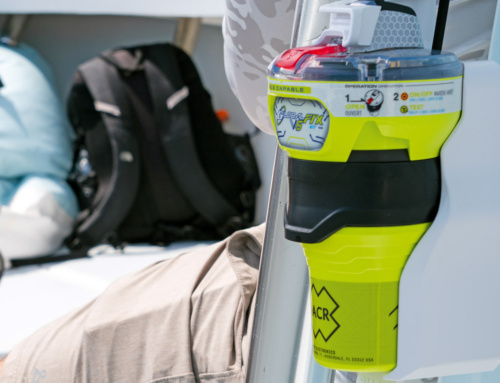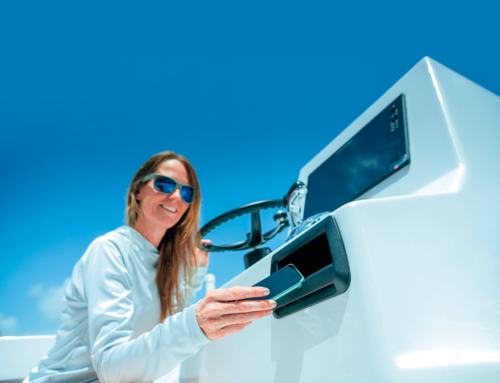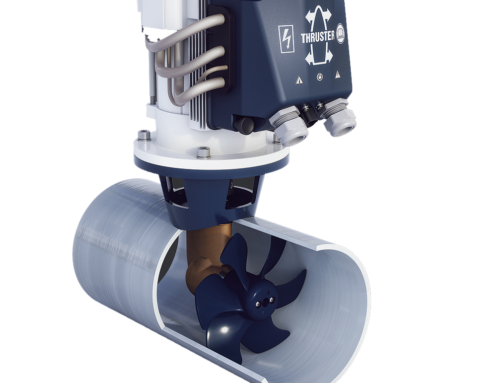Will this radical approach to hull growth relegate conventional antifouling to the history books?
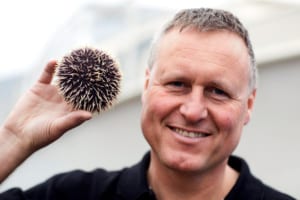
Dr Rik Breur with his ‘urchin inspiration’.
Any new antifouling concept rarely goes unnoticed, and there have certainly been a few ‘unusual’ alternatives over the years. Regardless, chandlers’ shelves are still well stocked by the likes of Hempel and International for good reason – they work. The gold standard in terms of antifouling has been Coppercoat, but with its cost, and the increasing drive to keep our oceans clean, even this has its critics.
Finsulate antifoul is a totally new take. Its creator, Dr Rik Breur, founder of Finsulate in the Netherlands, got his inspiration from scuba diving. One thing that struck him was that crabs quickly become encrusted with growth, while sea urchins remain untroubled by barnacles and algae. Rik has replicated this sea urchin effect by creating a unique material comprising a nylon web of tiny spines. This material is then produced as a wrap, which is applied in strips, courtesy of a very strong eco-friendly adhesive. Prior preparation consists of removing all conventional antifouling before a primer of epoxy is applied, followed by Finsulate.
Finsulate is manufactured through a unique process, whereby the nylon spines are applied onto a chemical-free super-strong substrate adhesive. This provides an anchor for the fibres, which are bonded vertically through a process known as ‘electrostatic flocking’. This process passes a high voltage through a container holding the spines as they are released downwards onto the substrate. This makes them land vertically onto the substrate adhesive, and once this has set, you are left with the final product – a fine furry wrap. The concept of electrostatic flocking is not new, but what had to be perfected was durability. The finished product is subjected to an attrition test, which involves a vertical scraper blade being run over it several thousand times. It can’t lose a single spine, otherwise you have a product that will be polluting the seas with microplastic. The wrap adhesive is normally guaranteed for five years, depending on use.
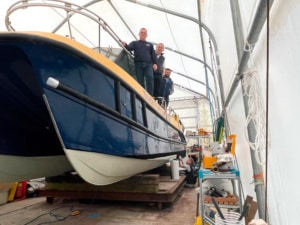
With the hull freshly epoxied, the wrap can be applied.
The first trial of this product in the UK is being conducted at the moment in Falmouth Harbour with the two harbour commissioner’s boats. Rustler Yachts, based in Falmouth, have provided the facilities for Finsulate to apply their product to the vessels, with a view to potentially becoming UK agents should the trial prove successful. This fits with Falmouth Harbour’s recent win in Cornwall’s Sustainability Awards, and is very much in keeping with the local green ethos.
The big question that will have entered most planing boat owners’ minds is: how is my hull going to perform with a very short haircut on its underside? Well, Finsulate give no direct answer to this specific planing boat question, though they have various grades for different craft, with the fastest grade being described as suitable for semi-displacement boats. The tiny spines apparently incline aft when the boat is underway, supposedly creating no extra drag. Finsulate appears to have been focused on commercial shipping and sailing yachts in the past, as well as offshore platforms, so its suitability for planing boats is uncertain. Having spoken to Rustler Yachts regarding the exact surface texture of Finsulate, I am told it feels like soft velvet. It is certainly an interesting concept, but until the Falmouth trials conclude in the spring, the jury is out.

An enlarged cross section of the Finsulate wrap.



